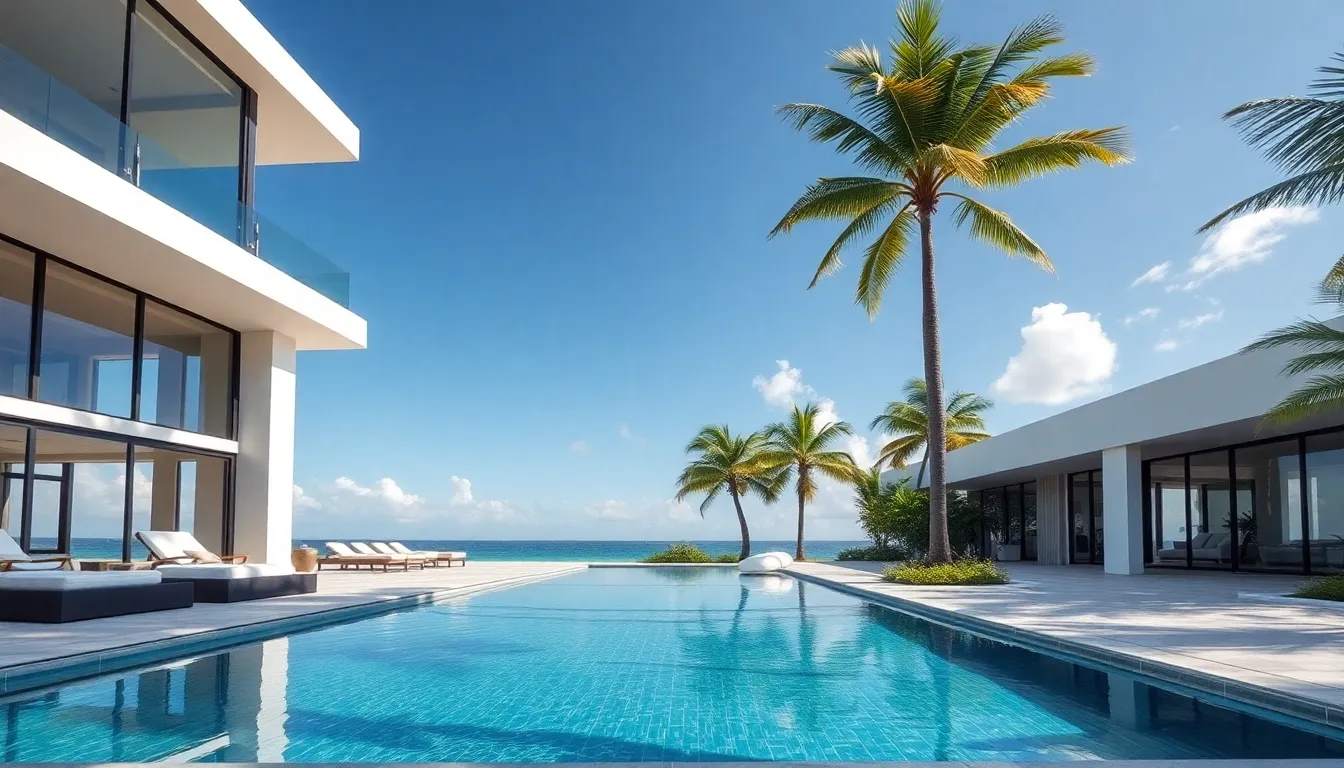Luxury home investment isn’t just about owning a beautiful property; it’s a strategic financial decision that can yield significant returns. As the real estate market evolves, high-end properties continue to attract savvy investors looking for stability and growth. With a strong demand for luxury homes in prime locations, these investments often appreciate faster than traditional properties.
Investing in luxury real estate offers unique benefits. From exclusive amenities to potential rental income, high-value homes provide a lifestyle that appeals to affluent buyers. Understanding market trends and the factors that drive luxury home values can empower investors to make informed decisions. In this article, we’ll explore the essentials of luxury home investment, helping readers navigate this lucrative market with confidence.
Table of Contents
ToggleUnderstanding Luxury Home Investment
Luxury home investment represents a unique financial strategy within the real estate sector. This segment attracts investors aiming for high returns through premium properties in desirable locations.
What Defines Luxury Homes?
Luxury homes possess specific attributes that distinguish them from standard residences. These attributes include:
- High-Quality Materials: Luxury homes often feature superior construction materials, enhancing durability and aesthetic appeal.
- Prime Location: Luxury properties are typically situated in affluent neighborhoods, often near amenities such as fine dining, shopping, and cultural attractions.
- Exclusive Amenities: Many luxury homes offer additional features like private pools, spa facilities, and landscaped gardens.
- Custom Design: Custom architectural designs and luxurious finishes characterize these residences, adding uniqueness and value.
- Spacious Interiors: Luxury homes often provide ample square footage, accommodating high-end features such as vast living areas and multiple bedrooms.
The Appeal of Luxury Home Investment
Investing in luxury real estate has several compelling factors. These factors include:
- Strong Appreciation Potential: Luxury homes often appreciate faster compared to traditional properties, driven by demand in sought-after areas.
- Stable Asset: Luxury properties tend to weather economic downturns more effectively, providing a reliable investment.
- Rental Income Opportunities: These properties can generate significant rental income, especially in tourist destinations or metropolitan areas.
- Brand Value: High-end properties often carry strong brand recognition, enhancing marketability and resale value.
- Tax Benefits: Investors in luxury real estate can leverage tax deductions related to mortgage interest and property depreciation.
Investors considering luxury home investment must evaluate these defining characteristics and appealing benefits to navigate the market effectively.
Market Trends in Luxury Real Estate

Luxury real estate markets are characterized by distinct dynamics influenced by demand, supply, and geographic preferences. Understanding these trends is vital for making informed investment choices.
Current Demand and Supply Dynamics
Current demand for luxury homes remains robust. High-net-worth individuals actively seek properties with unique features and location advantages. The supply of luxury homes, however, faces constraints due to limited new developments and zoning regulations in prime areas. According to the National Association of Realtors, luxury home sales increased by 15% in 2022 compared to the previous year, underscoring a growing appetite for high-end properties.
Price appreciation in luxury markets often surpasses that of traditional real estate, driven by competitive buyers and low inventory. Active buyers frequently originate from diverse backgrounds, including technology executives and international investors, who prioritize exclusive amenities and prime locations. The median price for luxury homes in metropolitan areas climbed to $1.8 million in 2023, reflecting these trends.
Geographic Trends in Luxury Home Investment
Geographic trends reveal significant hotspots for luxury home investments. Coastal cities, such as Miami, Los Angeles, and New York, attract affluent buyers due to their lifestyle offerings and climate. In 2023, Miami reported a 20% increase in luxury sales, primarily due to a surge in remote workers relocating to warmer climates.
Additionally, mountain resort areas like Aspen and Vail also see heightened real estate activity. These regions appeal to buyers seeking vacation homes with outdoor activities and exclusive surroundings. Statista reports that luxury properties in resort destinations appreciated by an average of 12% in the past year.
Emerging markets are also gaining traction. Places like Austin and Nashville have become popular for their cultural scenes, economic growth, and favorable tax environments. Investors focusing on these areas can capitalize on rising demand and increasing property values.
Benefits of Investing in Luxury Homes
Investing in luxury homes provides several key advantages that can enhance financial returns and portfolio stability. Understanding these benefits helps investors make informed decisions in this exclusive market.
Potential for High Returns
Luxury properties often appreciate at a faster rate than standard real estate, making them a lucrative investment. Historical data shows that luxury homes can yield returns between 5% and 10% annually, depending on market conditions. For instance, some luxury markets, like San Francisco and New York, have experienced price growth surpassing 20% during economic booms. High demand from affluent buyers fuels this appreciation, especially in prime locations. When investors choose properties with unique features or in sought-after neighborhoods, they often secure greater long-term value.
Diversification of Investment Portfolio
Luxury homes offer diversification vital for a balanced investment strategy. Real estate, particularly in the luxury sector, behaves differently than equities or bonds, allowing investors to spread risk across multiple asset classes. This diversification shields investors from market volatility. Furthermore, luxury properties provide options for rental income, as high-net-worth individuals often seek high-quality rentals. Integrating luxury homes into an investment portfolio can enhance stability and protect against economic downturns since high-end properties tend to hold their value better than mid-range homes.
Risks Involved in Luxury Home Investment
Luxury home investment carries inherent risks that investors must recognize and manage effectively. Understanding these risks is crucial for informed decision-making.
Market Volatility
Market volatility poses a significant risk in luxury home investment. Prices can fluctuate based on broader economic conditions, with high-end properties often subject to more pronounced swings. Historical data shows that luxury markets tend to respond aggressively to economic downturns, sometimes experiencing price declines exceeding 15%. Investors should monitor economic indicators such as interest rates and consumer confidence, as luxury real estate may face downturns when these metrics decline.
Maintenance and Management Costs
Maintenance and management costs can significantly impact the overall investment return. Luxury homes often require higher upkeep due to their size and quality, with annual maintenance costs averaging 1% to 2% of the property’s value. Investors should budget for routine maintenance, property management fees, and unexpected repairs, which can add substantial financial burdens. Moreover, properties in prime locations may necessitate additional services, such as landscaping and security, increasing overall management costs.
Luxury home investment offers unique opportunities for those looking to enhance their financial portfolio. With the potential for substantial returns and the allure of exclusive amenities it’s an attractive option for many investors. Understanding market dynamics and trends is crucial for making informed decisions in this competitive landscape.
As demand for high-end properties continues to rise in sought-after locations investors must stay vigilant. While the prospects are promising the risks associated with market volatility and maintenance costs shouldn’t be overlooked. By balancing these factors investors can navigate the luxury real estate market effectively and capitalize on its advantages.




